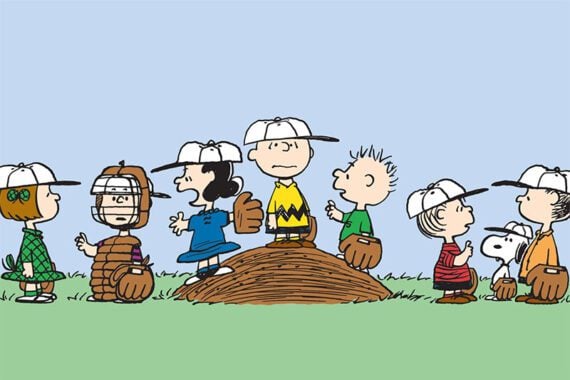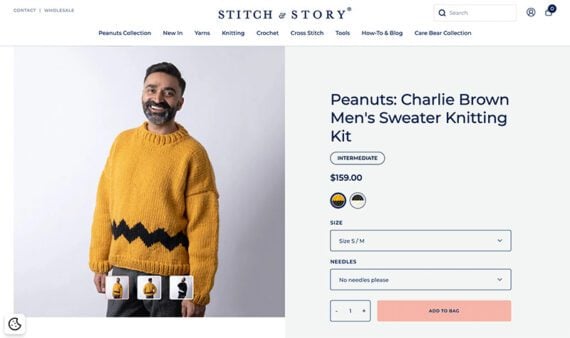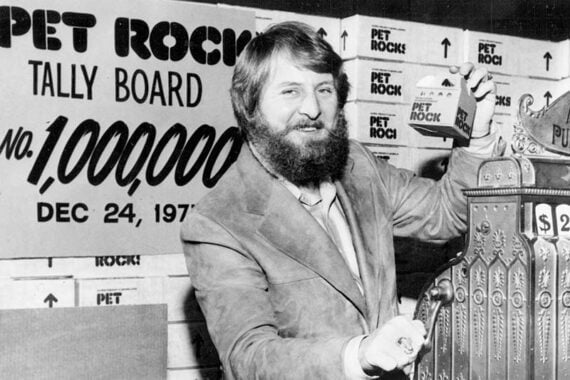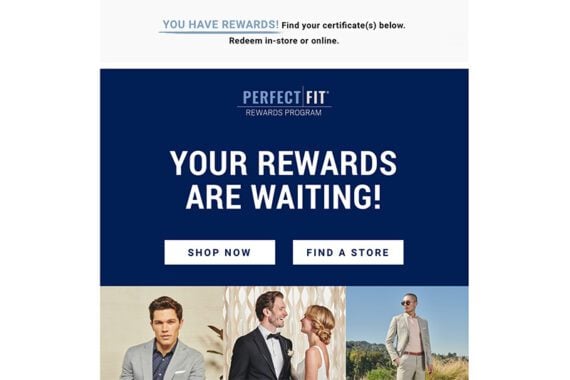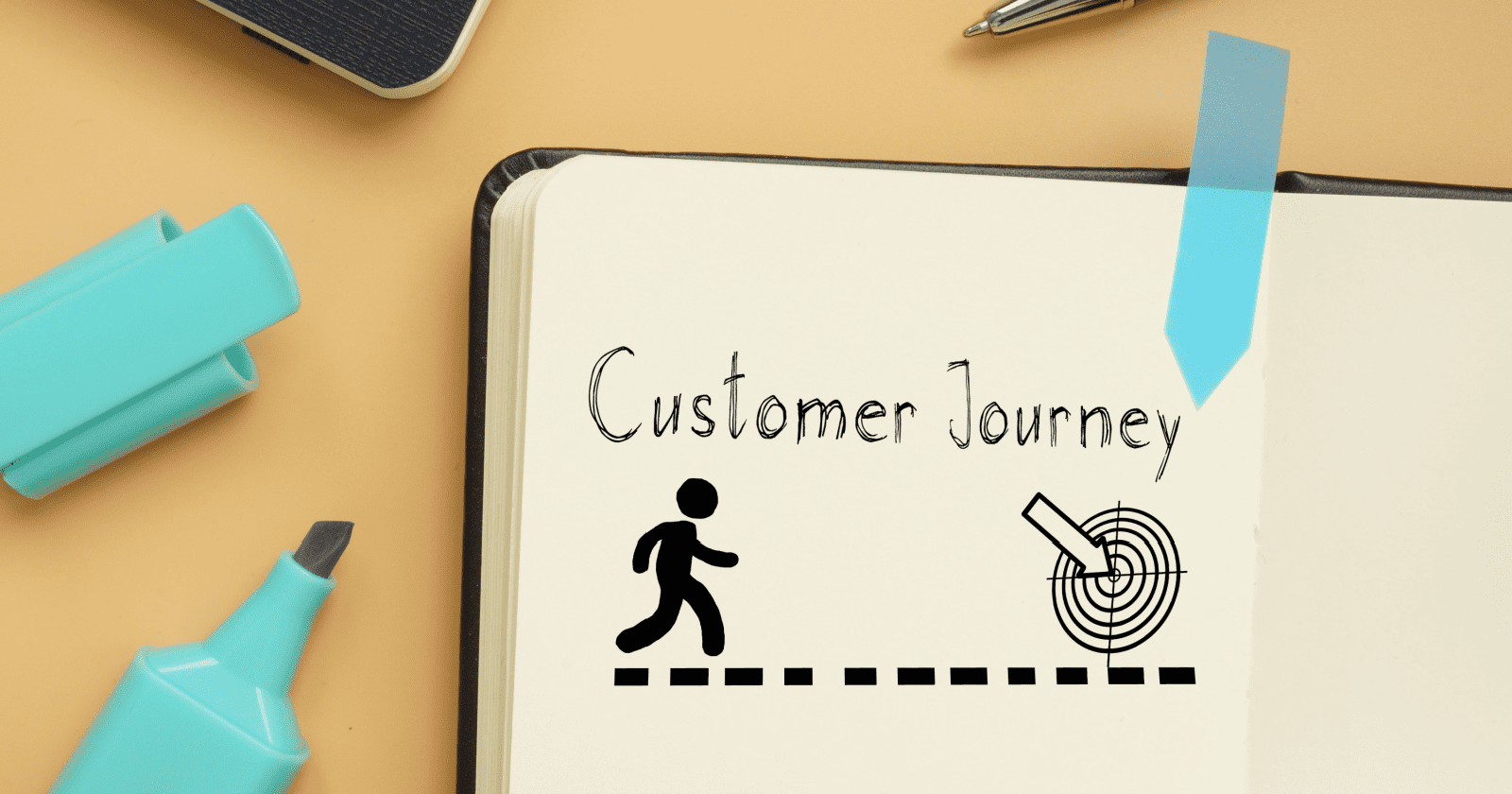Content marketing is experiencing a paradigm shift.
For decades, marketers have relied on the traditional funnel – a linear model designed to move consumers from awareness to action. But, as consumer behavior evolves, so must the strategies that guide them.
The rigid structure of the traditional funnel no longer aligns with the complexities of modern decision-making.
Enter situational content marketing – a dynamic approach that recognizes the nuances of consumer contexts and tailors content to specific moments within their journey.
This method doesn’t just target audience segments based on demographics or personas. It considers the situations consumers find themselves in, the decisions they need to make, and the triggers influencing those decisions.
The result?
A more adaptive, empathetic, and impactful content strategy that resonates with audiences in real-time.
The Evolution Of The Marketing Funnel: The Rise Of Situational Targeting
Traditional marketing funnels rely on broad audience segmentation – grouping individuals by demographic or psychographic traits and attempting to guide them through predefined stages: awareness, interest, decision, and action (AIDA).
However, this static model assumes that all individuals in a segment behave uniformly and progress linearly.
The reality is far more nuanced.
Consumer journeys are shaped by their immediate circumstances:
- Are they in a hurry, or do they have time to research?
- Are they making a routine purchase or evaluating a significant investment?
- Are external factors like social influence or emotional states affecting their choices?
Recognizing these factors, situational content marketing shifts the focus from targeting broad audience types to addressing specific contexts within the funnel.
This strategy allows brands to engage consumers with content that aligns with their immediate needs, emotions, and priorities.
Read More: What Is A Conversion Funnel? Optimize Your Customer Journey
High-Effort Vs. Low-Effort Purchases
A cornerstone of situational content marketing is understanding the effort a consumer is willing to invest in a decision.
Purchases fall along a continuum:
- High-effort purchases require significant cognitive, emotional, and time investment. These include major financial or lifestyle decisions like buying a car, choosing a college, or purchasing a home.
- Low-effort purchases are quick, habitual, or impulsive, involving minimal thought or research. Examples include grabbing a candy bar, choosing a subscription service, or buying a soft drink at a convenience store.
This distinction influences the type of content required to guide consumers.
High-effort decisions demand detailed, trust-building content, while low-effort decisions benefit from simple, emotionally engaging messages.
Rethinking The AIDA Funnel: The Reality Of Consumer Behavior
The traditional AIDA model suggests that marketing moves consumers through a sequential process:
- Awareness: Capturing attention with ads or promotions.
- Interest: Engaging the audience with content or messaging.
- Decision: Influencing choices through comparisons or benefits.
- Action: Driving conversions through compelling calls to action.
Limitations Of The Traditional Funnel
Unfortunately, the AIDA model doesn’t account for the dynamic and situational nature of modern decision-making.
Instead of progressing step-by-step, consumers:
- Combine new information with pre-existing mental databanks.
- Use shortcuts (heuristics) to simplify decisions in overwhelming or high-choice environments.
- Respond to external triggers, such as ads or social recommendations, that bypass some funnel stages entirely.
The Complex Reality Of Consumer Journeys
Instead of following a clear progression, consumers often take fragmented paths influenced by their unique situations and prior knowledge.
Key behaviors that disrupt the AIDA framework include:
- Skipping Stages: A consumer might move directly from awareness to action if they encounter a strong emotional trigger or social proof.
- Example: A social media ad for a trending product might lead to an impulse purchase without requiring further engagement or research.
- Looping Back: Consumers may revisit earlier stages, such as moving from decision-making back to interest as they seek additional information or alternatives.
- Example: A potential buyer researching laptops might decide on a brand and then return to exploring reviews after discovering a competitor’s offer.
- Blending Stages: Awareness, interest, and decision-making often happen simultaneously as consumers interact with multiple touchpoints.
- Example: A targeted Instagram ad may simultaneously capture attention, spark interest, and showcase key benefits, collapsing multiple AIDA stages into one interaction.
Situational Content Marketing: A Fluid Alternative
In contrast to the rigid AIDA model, situational content marketing aligns with the fluid, dynamic nature of consumer journeys.
This approach acknowledges that decision-making is rarely sequential; it is situational and influenced by context, timing, and triggers.
Mental databanks act as the foundation for choices, pulling in impressions and associations from past experiences. Each interaction is an opportunity to build or strengthen these databanks, making the brand more memorable and accessible.
Instead of methodically weighing options at each stage, individuals rely on mental shortcuts shaped by numerous factors, including:
- Prior Experiences: Positive interactions with a brand, product, service, or experience can solidify loyalty and trust.
- Emotional Triggers: Nostalgia, humor, memories, or fear can drive decisions without detailed deliberation.
- Environmental And Social Factors: Recommendations from friends or influencers, the opinions, values, and morals of a society, and other external factors can heavily influence choices.
These factors create a mental databank of brand impressions and associations that consumers draw upon when making decisions.
What Are Mental Consumer Databanks?
Mental consumer databanks are what I call the wide range of information, behaviors, attitudes, judgments, and experiences stored by a consumer that are relevant to a buyer journey, including:
Emotional Associations
Consumers often tie products and brands to memories, feelings, or experiences.
Emotional connections are powerful because they create deep, lasting impressions that don’t require logical reinforcement.
Example: A favorite chocolate bar may evoke nostalgia for childhood or comfort during stressful moments.
Brand Impressions
Consistency in positive experiences builds strong brand impressions over time.
Positive impressions ensure a brand becomes synonymous with certain qualities, making it an easy choice during decision-making.
Example: Tesla is often associated with innovation, sustainability, and cutting-edge technology due to its consistent branding and messaging.
Social Identity
Brands often act as signals of group membership or personal values.
Consumers align with brands that reflect their desired self-image or societal affiliations.
Example: Wearing a Rolex conveys sophistication and success, while using a reusable water bottle might signal environmental consciousness.
How Mental Databanks Influence Recall And Decisions
Consumers don’t start from scratch when they encounter a need or situation that prompts a decision.
Instead, they draw on their mental databanks to identify familiar brands and options. Several key factors influence this process:
- Habitual Recall: Familiarity breeds preference. Consumers are more likely to recall and choose brands they’ve interacted with regularly.
- Example: A shopper craving chocolate automatically reaches for a Mars bar because it’s a habitual choice, even if there are new or similar options available.
- Preference Formation: Past experiences and comparisons shape preferences. Over time, these preferences dominate decision-making.
- Example. A consumer who consistently chooses Apple products because of their reliability may skip evaluating competitors entirely when upgrading their phone.
- Memory-Based Connections: Mental databanks link brands to broader networks of concepts, enhancing recall speed and confidence.
- Example: Coca-Cola might be linked to happiness, holidays, or refreshing moments, making it the first brand a consumer considers when thinking about soft drinks.
- Social And Situational Triggers: External cues, such as group behavior or advertising, can activate mental databanks, prompting recall.
- Example: Seeing an influencer wear a particular sneaker brand might remind a consumer of their own desire to belong to that social group, leading to a purchase.
Building And Strengthening Mental Databanks
Brands that consistently reinforce positive associations are more likely to occupy a strong position in consumers’ mental databanks.
Here’s how:
- Emotional Storytelling: Craft narratives that evoke emotions and create memorable connections.
- Example: A pet food brand shares real stories of rescued animals thriving after being fed its products, tying its brand to compassion and care.
- Consistent Brand Messaging: Maintain a uniform tone, imagery, and message across all platforms and campaigns.
- Example: Nike consistently reinforces its “Just Do It” mantra, linking the brand to motivation and achievement.
- Repetition With Variation: Regular exposure to a brand strengthens recall, but variation keeps it engaging.
- Example: A beverage company creates multiple ads around the theme of “refreshment” but tailors each to a specific situation, like a summer picnic or a post-workout moment.
- Social Proof: Use testimonials, reviews, and endorsements to build trust and credibility.
- Example. A software company highlights customer success stories, showing how its product solves specific problems.
- Category Dominance: Ensure the brand becomes synonymous with a product category by consistently outperforming competitors in visibility and messaging.
- Example: Google’s consistent dominance in search engines has made its name interchangeable with the act of searching online (“to Google”).
Mental Databanks In Action
Wrong Approach
Scenario: The same agency runs a generic ad saying, “Get the best SEO services here.”
Outcome: Without addressing the specific needs or context of ecommerce businesses, the ad fails to resonate.
The lack of tailored messaging means the agency doesn’t establish a strong position in the mental databank of potential clients, making them less likely to be recalled during decision-making.
Right Approach
Scenario: A digital marketing agency wants to be the go-to choice for ecommerce businesses looking for SEO services.
Strategy:
- Use targeted ads that highlight specific pain points, such as “Boost your holiday sales with tailored SEO strategies.”
- Leverage search and display ads on platforms like Google Ads to ensure visibility when users search for terms like “ecommerce SEO help” or “SEO for online stores.”
- Reinforce the message by running retargeting campaigns with testimonials or case studies that showcase results (e.g., “See how we increased XYZ Store’s traffic by 150% in 3 months”).
- Build situational relevance by timing ads during peak planning periods, such as before major shopping seasons or when Google algorithm updates are announced.
Why Mental Databanks Are Essential For Situational Content
- Improved Recall: Consumers are more likely to recall brands that occupy a strong position in their mental databanks when facing decisions.
- Reduced Decision Fatigue: Familiarity reduces the cognitive load of decision-making, making consumers more likely to choose a brand they know well. For example, a busy parent will use Cheerios for their child’s breakfast without comparing it to other cereals because it’s a trusted choice.
- Enhanced Emotional Engagement: Brands tied to positive emotions or memories are more likely to generate repeat purchases. This is why Coke releases holiday ads each year. They reinforce happiness and nostalgia, prompting loyal purchases during the festive season.
Maximizing The Impact Of Situational Triggers
Effectively leveraging situational triggers requires marketers to tailor their strategies based on the decision-making context, consumer behavior, and external influences.
By incorporating insights into how and why people make choices, brands can craft campaigns that resonate deeply and drive action.
1. Analyze The Decision Context
High-Effort Decisions: Provide detailed, logical, and emotionally compelling content that addresses the consumer’s need for thorough research and justification.
Tactics:
- Use in-depth resources like whitepapers, detailed case studies, or comparison charts.
- Highlight long-term benefits, such as cost savings, increased efficiency, or alignment with values like sustainability.
- To empower informed decision-making, provide interactive tools like ROI calculators or product demos.
Example: A SaaS company offers a downloadable ebook titled, “How to Choose the Right CRM for Your Business,” comparing features, costs, and user reviews.
Low-Effort Decisions: Focus on convenience, simplicity, and immediate gratification to capture impulse purchases or habitual behaviors.
Tactics:
- Leverage quick calls-to-action, such as “Sign Up in Seconds” or “Try Free Today.”
- Position products as easily accessible, with minimal effort required to get started.
- Use repetition and visual cues to reinforce brand familiarity.
Example: A subscription box service runs ads with, “Start Your First Box for Only $5 – No Commitment,” simplifying the decision.
2. Leverage Emotional And Cognitive Factors
Human decisions are rarely purely rational. Emotional and cognitive elements, such as trust, nostalgia, and perceived value, play a critical role.
Emotional Factors:
- Build Trust: Highlight endorsements from trusted figures, such as industry experts or well-known influencers. Use real testimonials to build credibility and authenticity.
- Evoke Nostalgia: Incorporate imagery or messaging that taps into positive past experiences.
- Utilize Emotional Contagion: Align your brand with trending movements or shared cultural values. For example, a fitness platform connects its messaging to self-improvement trends with, “Achieve More Every Day with Our All-in-One Tracker.”
Cognitive Factors:
- Simplify Information: Use short, clear messages that are easy to recall. Present information in lists, mnemonics, or frequently repeated formats for memorability.
- Enhance Perceived Value: Highlight the benefits in direct comparisons to competitors. For example, a hosting provider might advertise, “Faster Speeds, Unlimited Bandwidth – 30% Cheaper than the Competition.”
3. Emphasize Relevance
Relevance is one of the most critical factors in capturing consumer attention and aligning with situational triggers. Ads and content should feel timely, personal, and well-placed.
Timing
Serve ads during key decision-making moments or leverage real-time data to align with situational needs.
Example: A coffee delivery service offers geo-targeted promotions during morning rush hours.
Placement
Ensure your ads appear where consumers most likely need or notice them. Or, use contextual relevance to align with immediate consumer behavior.
Example: An ecommerce platform runs retargeting ads for abandoned cart items during payday periods.
Personalization
Tailor messaging to specific audiences based on their behaviors, demographics, and locations.
Example: A digital marketing agency might create dynamic ads targeting ecommerce businesses during Black Friday with messages like, “Optimize Your Campaigns in Time for the Big Sale.”
4. Build And Reinforce Mental Databanks
Effective use of situational triggers strengthens a brand’s position in the consumer’s mental databank.
Once your brand occupies a dominant position, it’s more likely to be recalled during decision-making moments.
- Repetition: Repeat key messages across channels while maintaining consistency in tone and visuals.
- Association: Pair your brand with positive emotions or aspirational goals. Use evaluative conditioning to link your product with other trusted or well-known elements.
- Social Proof: Display testimonials, user reviews, or real-time activity.
5. Engage Consumers Across Stages
Situational triggers can vary throughout the buying journey. Marketers should align their strategies with the various stages while maintaining situational relevance.
- Awareness: Capture attention with emotional, engaging content. Here, we might create a PPC ad for a graphic design tool that uses humor and vibrant visuals to stand out in crowded feeds.
- Mental Databank Building: Provide informational content that builds trust and showcases benefits. For this stage, we’d recommend that a webinar platform offers a video guide, “5 Steps to Increase Your Virtual Event Attendance,” for businesses exploring new solutions.
- Buying Decision: Highlight urgency and ease of adoption to nudge consumers. A prime example of this would be a direct email that says, “Sign Up Today and Get 3 Months Free – Limited Offer.”
- The Purchase: Remove friction by simplifying processes. Here, for example, the message above the conversion (sign-up form) might be, “Start Your Free Trial in Under 60 Seconds.”
Practical Applications Of Situational Content
The success of situational content marketing hinges on its ability to respond dynamically to consumer behaviors, needs, and external contexts.
Here are some key practical applications and provide actionable tips to maximize the impact of your situational content.
1. AI-Driven Personalization
Using artificial intelligence (AI) and machine learning, brands can analyze consumer behavior, preferences, and location to deliver hyper-personalized messages in real-time.
AI tools analyze browsing history, past purchases, and engagement patterns to predict what a consumer is likely to want or need next.
Recommendations, dynamic ads, and email campaigns are tailored to the individual consumer’s behavior or preferences.
Tips For Implementation
- Use AI to create product recommendations that reflect a user’s recent interactions with your site or app.
- Employ personalized email campaigns triggered by specific actions, such as abandoned carts or product views.
Examples
- Wrong Approach: The same platform sends a generic email blast promoting unrelated products, which fails to engage the consumer based on their unique behavior.
- Right Approach: An ecommerce platform uses AI to send a personalized email saying, “You left this in your cart!” with a discount code, increasing the likelihood of purchase.
Pro Tip: Combine AI personalization with location-based targeting to deliver even more relevant content. For example, promote rain gear to users in regions experiencing bad weather.
2. Dynamic Messaging
Dynamic messaging allows content to adapt in real-time to external factors like weather, trending topics, time of day, or even breaking news.
It ensures that marketing messages remain timely and resonate with the consumer’s immediate environment.
Dynamic ads adjust text, visuals, or offers based on triggers like location, time, or current events. Social media and display ads are updated to reflect relevant, real-time events.
Tips For Implementation
- Create ads that adapt to weather patterns. For example, promote warm drinks during cold weather or sunscreen during a heatwave.
- Use trending hashtags or cultural moments to tailor your messaging for relevancy.
- Update homepage banners or promotional content based on calendar events, such as holidays or major industry conferences.
Examples:
- Wrong Approach: The same service uses generic messaging like, “Order now!” that doesn’t reflect the immediate weather conditions or consumer needs.
- Right Approach: A food delivery service runs geo-targeted ads that say, “Craving something warm? Get 20% off soup deliveries during today’s snowstorm.”
Pro Tip: Monitor consumer sentiment around trending events to ensure your messaging aligns with the mood and tone of your audience.
3. Lifecycle Strategies
Tailoring content to match the consumer’s position in the customer journey, from initial discovery to post-purchase retention, ensures relevance and nurtures long-term relationships.
Map out the stages of the customer journey: awareness, education/information gathering, consideration, decision, and loyalty.
Then, align messaging, offers, and content types to each stage, addressing specific needs or pain points.
Tips For Implementation
- Awareness Stage: Create engaging, informative content to introduce your brand and attract new audiences. Focus on content that builds brand visibility and educates potential customers about their problems.
- Examples: Blog posts, social media campaigns, SEO-optimized articles, or short-form video content (e.g., TikToks or Reels).
- Education/Information Gathering Stage: Provide content that educates your audience and helps them understand potential solutions. Focus on addressing common questions or misconceptions.
- Examples: Educational webinars, ebooks, guides, and detailed FAQ pages that position your brand as a thought leader.
- Consideration Stage: Offer comparative resources that help prospects evaluate their options and understand how your product or service stands out. Emphasize credibility and value.
- Examples: Case studies, video tutorials, product demos, and side-by-side feature comparisons.
- Decision Stage: Encourage conversions with content that reduces risk and creates urgency. Highlight why your offering is the best choice and provide incentives to act.
- Examples: Limited-time offers, customer testimonials, free trials, or discount codes.
- Loyalty Stage: Focus on retaining customers and fostering long-term relationships. Deliver content that rewards loyalty, introduces additional offerings, and keeps your brand top-of-mind.
- Examples: Personalized rewards, upsell opportunities, exclusive offers, and invitations to community events or feedback surveys.
Examples
- Wrong Approach: The same platform uses a single, generic campaign across all stages, offering no differentiation between audiences. This fails to meet specific needs, leading to disengagement and missed opportunities.
- Right Approach: A project management software platform creates content tailored to each stage:
- Awareness: Blog articles like “Top 10 Project Management Challenges (and How to Solve Them).”
- Education/Information Gathering: A free webinar titled, “How to Streamline Your Workflows with Modern Tools.”
- Consideration: A downloadable comparison chart showing how their platform stacks up against competitors.
- Decision: A limited-time offer of “50% Off Your First 3 Months” for trial users.
- Loyalty: Regular newsletters highlighting new features and exclusive discounts for annual renewals.
Pro Tip: Use automated workflows to trigger lifecycle-specific messaging at the right time. For example, send a “How-to” email series for new users and a renewal reminder with perks for long-term customers.
4. Retargeting Based On Consumer Behavior
Retargeting uses tracking data to re-engage consumers who have interacted with your brand but haven’t converted yet. It’s particularly effective for aligning situational content with high-intent audiences.
Display ads or email campaigns are triggered based on behaviors like abandoned carts, product views, or site visits. Dynamic retargeting serves ads featuring the exact products or services the consumer explored.
Tips For Implementation
- Offer exclusive discounts or limited-time offers in retargeting ads to create urgency.
- Showcase customer reviews or testimonials to address lingering concerns.
Examples
- Wrong Approach: The same retailer runs retargeting ads featuring unrelated equipment, missing the opportunity to personalize.
- Right Approach: A fitness equipment retailer retargets users who viewed a treadmill with ads featuring a discount and testimonials from satisfied customers.
Pro Tip: Use retargeting not just for abandoned carts but also for upselling or cross-selling related products to existing customers.
5. Context-Aware Content Placement
Placing content in environments where it feels natural and relevant enhances consumer engagement and reduces the likelihood of being ignored.
Identify consumer habits and behaviors to determine the best platforms and moments to engage them. Use tools like heatmaps, traffic data, and social listening to pinpoint where and when your audience is most active.
Serve ads on platforms where your target audience spends the most time. Use platform-specific features, such as Instagram Stories or LinkedIn carousel ads, to tailor your message.
Examples
- Wrong Approach: The same agency runs generic ads on a gaming website, where their target audience is unlikely to engage.
- Right Approach: A digital marketing agency uses LinkedIn ads to promote a whitepaper about SEO strategies for businesses targeting B2B audiences.
Pro Tip: Match the tone and format of your content to the platform. Professional content performs better on LinkedIn, while visually engaging content thrives on Instagram.
The Future Of Funnels: From Funnels To Ecosystems
The traditional marketing funnel is being transformed. In a world where consumer behavior is more fragmented and situational than ever, marketers are reimagining this framework into something more fluid, adaptable, and human-centric.
The future of content marketing recognizes that consumers don’t follow predictable paths. Instead, they jump between stages, influenced by shifting priorities, real-time needs, and external triggers.
Rather than moving consumers step-by-step through awareness, consideration, and decision, the funnel is evolving into an ecosystem – a dynamic model that recognizes the interconnected and iterative nature of consumer behavior.
Success is no longer defined by immediate conversion. The goal is to create value at every stage of the journey, building relationships that transcend individual transactions.
As we enter 2025, marketers must embrace flexibility, leveraging technology and empathy to adapt to the complexities of real-world consumer behavior.
More Resources:
Featured Image: Jack_the_sparrow/Shutterstock






















